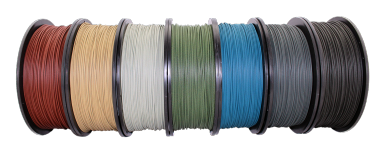 Algae in large quantities is usually a bad sign. Harmful algal blooms form when their aquatic environment is out of balance, usually due to fertilizer runoff or other environmental toxins. An algal bloom, besides being an alert to an ecological problem, can also damage its environment further by absorbing oxygen and generating its own toxins. There is no shortage of algae on the planet, which is worrisome for many environmental reasons, but every algal bloom has a silver lining thanks to companies like 3D Fuel and ALGIX.
Algae in large quantities is usually a bad sign. Harmful algal blooms form when their aquatic environment is out of balance, usually due to fertilizer runoff or other environmental toxins. An algal bloom, besides being an alert to an ecological problem, can also damage its environment further by absorbing oxygen and generating its own toxins. There is no shortage of algae on the planet, which is worrisome for many environmental reasons, but every algal bloom has a silver lining thanks to companies like 3D Fuel and ALGIX.
In April, the two companies announced that they would be collaborating to create a new line of 3D printer filament from algae. Today, that filament has been officially released. Algae-Fuel is available in 1.75 and 2.85 mm spools, in a wide range of nature-inspired colors: Primordial Red, Terrestrial Tan, Algae Green, Evergreen, Agave Blue, Tundra Gray and Swamp Black. According to 3D Fuel, the filament prints with a natural-feeling texture similar to bone or sandstone. At the moment, pre-orders are being taken; prices are not available on the website yet, but send them a message through the order page and they’ll send you more details.
“We believe that these products will be very attractive to many users of FDM/FFF technology,” says Barbara Zeller, Marketing Manager for 3D Fuel. “Our Algae-Fuel product line can help to increase the adoption of more sustainable filaments, because the user doesn’t have to compromise on aesthetic, sustainability, performance or quality.”
 Algae-Fuel is made from biodegradable PLA combined with algae specifically harvested from areas where its excess threatens its environment. It has improved Life Cycle Assessment results and enhanced biodegration capabilities, and it’s energy efficient: Algae-Fuel prints at a lower temperature than standard PLA, requires less energy for efficient printing, and is stronger than other filled PLA filaments.
Algae-Fuel is made from biodegradable PLA combined with algae specifically harvested from areas where its excess threatens its environment. It has improved Life Cycle Assessment results and enhanced biodegration capabilities, and it’s energy efficient: Algae-Fuel prints at a lower temperature than standard PLA, requires less energy for efficient printing, and is stronger than other filled PLA filaments.
“Part of the beauty of our process is that we take nuisance algae from aquaculture, water treatment facilities and even from algal blooms in ponds and lakes,” says Ashton Zeller, Director of R&D for 3D Fuel. “We are helping to aid in ecosystem balance and are able to provide more sustainable materials without utilizing arable cropland (as most other bioplastics require) for our bio-feedstock.”
3D printing’s environmental merits are frequently up for debate, but the fact is that the technology does go through a lot of plastic. So it’s very encouraging to see an increasing number of companies who are coming up with creative ways to make the industry more sustainable, particularly through the manufacture of ingenious, environmentally-friendly filaments. 3Dom USA has been in the news in recent months for its filaments made from coffee and beer, as well as for its biodegradable filament spools. Recycled filaments are also becoming more common thanks to companies like Fila-Cycle and Colletivo Cocomeri. There are a lot of options out there if you want to make your 3D printing a zero-waste endeavor. Just pick your material; if there’s not a filament made from it already, there probably will be soon.
Have you tried out this new filament? Let us know your experiences in the Algae-Fuel Filament forum thread on 3DPB.com.
Subscribe to Our Email Newsletter
Stay up-to-date on all the latest news from the 3D printing industry and receive information and offers from third party vendors.
You May Also Like
Gorilla Sports GE’s First 3D Printed Titanium Cast
How do you help a gorilla with a broken arm? Sounds like the start of a bad joke a zookeeper might tell, but it’s an actual dilemma recently faced by...
Nylon 3D Printed Parts Made More Functional with Coatings & Colors
Parts 3D printed from polyamide (PA, Nylon) 12 using powder bed fusion (PBF) are a mainstay in the additive manufacturing (AM) industry. While post-finishing processes have improved the porosity of...
$25M to Back Sintavia’s Largest Expansion of Metal 3D Printing Capacity Since 2019
Sintavia, the digital manufacturing company specializing in mission-critical parts for strategic sectors, announced a $25 million investment to increase its production capacity, the largest expansion to its operations since 2019....
Velo3D Initiates Public Offering in a Bid to Strengthen Financial Foundations and Drive Future Growth
Velo3D (NYSE: VLD) has been among a number of publicly traded 3D printing firms that have attempted to weather the current macroeconomic climate. After posting a challenging financial report for 2023,...

































